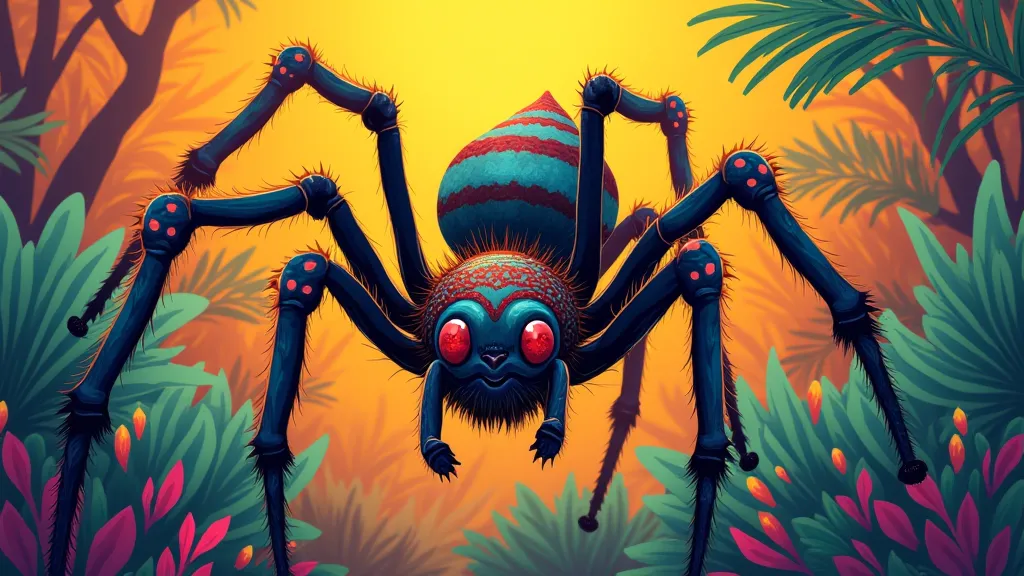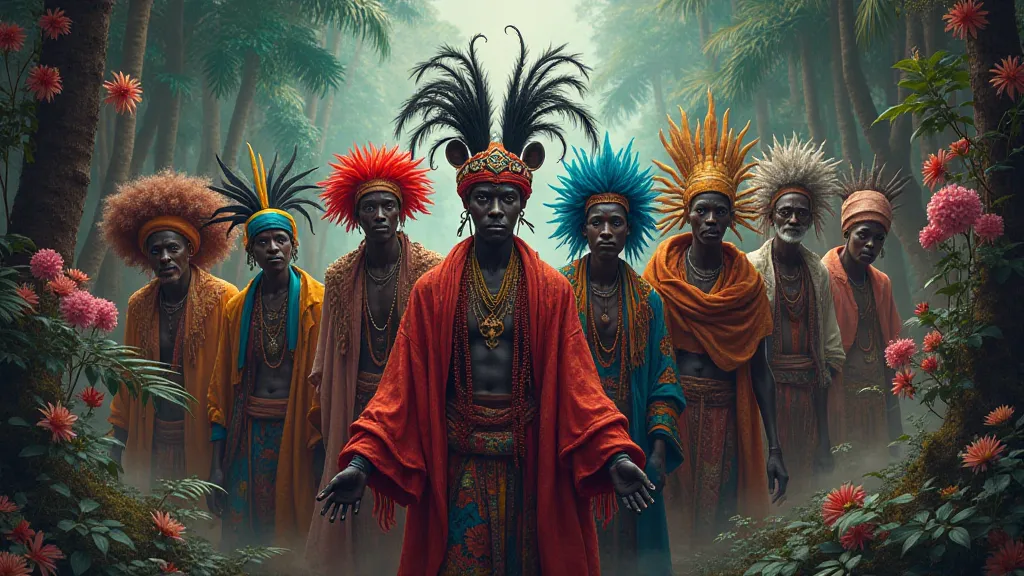Folktales of the Caribbean: Anansi the Spider and Colonial Influences
The Caribbean, a vibrant archipelago born from a confluence of cultures, boasts a unique and captivating storytelling tradition. Woven from threads of African spirituality, Indigenous knowledge, and the complex history of colonialism, these tales offer a window into the region's soul. At the heart of this tapestry lies Anansi, the trickster spider, whose stories have captivated generations.

The Origins of Anansi: West African Roots
Anansi’s journey began in West Africa, particularly among the Ashanti people of Ghana. Originally, Anansi was a powerful and respected figure, a divine being associated with wisdom, knowledge, and storytelling. His stories served as moral lessons, explanations for natural phenomena, and methods for transmitting cultural values. He was a god, a mediator between the human and spirit worlds. The name ‘Anansi’ itself holds meaning – often interpreted as “skill at a trick” or "cleverness." These tales, like many epic narratives across the globe, hold a profound cultural weight.
The Transatlantic Passage and Transformation
During the transatlantic slave trade, enslaved Africans brought their rich oral traditions with them. Stripped of their freedom and identities, they clung to their culture as a source of strength and resilience. As these communities dispersed across the Caribbean islands, Anansi’s stories evolved. The transition wasn't seamless. The original deity began to be portrayed as a more human-like figure, often depicted as a clever trickster who outwits larger, more powerful adversaries. This transformation reflected the power dynamics of the colonial era. The enslaved found solace and empowerment in stories where the underdog, the small and seemingly insignificant Anansi, could triumph over oppression. The echoes of these narratives resonate with similar themes found in The Stories of the Georgia Caucasians: Epic Poetry and Mountain Legends, where figures overcome adversity through wit and resourcefulness.
Colonial Influence and the Evolution of the Tales
The colonial experience profoundly shaped the Caribbean storytelling tradition. Colonial powers attempted to suppress African cultural practices, viewing them as “primitive” or “pagan.” Storytelling was a powerful act of resistance, a way to preserve cultural identity in the face of forced assimilation. The tales of Anansi, with their themes of cunning and resilience, provided a subtle yet potent form of cultural subversion. The trickster figure allowed for satire of colonial authorities, expressed indirectly through the antics of the spider. The stories became a space to reclaim agency and express frustrations that could not be voiced openly. This mirroring of cultural preservation and resistance to outside influence can also be seen in the enduring power of folklore from other corners of the world, such as the powerful Folktales of Madagascar: Vampires, Forest Spirits, and the Magic of the Island, which similarly act as a record of heritage and identity.

Themes of Trickery, Resilience, and Cultural Identity
Caribbean Anansi tales consistently explore core themes:
- Trickery and Cleverness: Anansi's ability to outsmart his opponents is central to his character. He uses his wit and cunning to overcome challenges and achieve his goals.
- Resilience and Perseverance: The stories celebrate the ability to persevere in the face of adversity. Anansi’s small stature and seemingly impossible situations highlight the power of determination.
- Cultural Identity: The tales provide a framework for understanding Caribbean identity. They affirm the value of oral traditions, celebrate African heritage, and acknowledge the complex history of colonialism.
- Social Commentary: Beneath the surface of seemingly simple narratives, Caribbean Anansi stories often offer subtle critiques of social norms and power structures.
The Broader Context: Comparative Folklore and Storytelling Traditions
While Anansi’s presence is dominant, understanding Caribbean folklore requires appreciating the richness of storytelling across the globe. Many cultures have trickster figures – characters who use cunning and deception to achieve their goals, often challenging social norms and power structures. These figures, like Anansi, offer a way to explore complex themes and offer veiled critiques of authority. Examining the narratives of Iceland, for instance, reveals striking parallels to the Caribbean tradition. The powerful sagas, like Icelandic Sagas: Chronicles of Vikings and Norse Gods, are full of characters driven by ambition, cunning, and resilience – qualities that resonate across cultures and centuries. They provide a window into the values, beliefs, and social structures of those who created them, much like Anansi tales do for the Caribbean.
Beyond Anansi: A Diverse Storytelling Landscape
While Anansi dominates Caribbean folklore, it's important to remember the broader spectrum of storytelling traditions. Indigenous Arawak and Carib narratives, often intertwined with the natural world, continue to be told. French Creole tales, Spanish influenced myths, and Dutch folklore also contribute to the rich tapestry. Each island boasts unique variations on common themes, shaped by its own history and cultural nuances. The ability of oral traditions to adapt and change over time, incorporating new influences while retaining core narratives, is a testament to the resilience and creativity of storytelling communities worldwide.

The Power of Oral Tradition: Transmission and Evolution
The Caribbean’s oral storytelling tradition is not a static entity; it's a living, breathing cultural practice. Stories are constantly being adapted, reinterpreted, and reshaped by the storytellers and audiences. This dynamism is what makes the tradition so vibrant and relevant today. Consider the intricate details and complex social commentary embedded within these tales. Many Caribbean islands boast unique local variations of Anansi stories, showcasing a commitment to passing down tradition while embracing creative innovation.
Anansi and the Global Family of Tricksters
Anansi's position in the Caribbean is not unique; he's part of a much larger family of trickster figures that exist across cultures. From the West African hare to the Native American coyote, these characters serve similar functions in their respective societies. They challenge authority, disrupt social order, and offer a form of entertainment that often carries a deeper meaning. The constant struggle of the underdog, personified by Anansi, reflects the challenges faced by marginalized communities throughout history.
Preserving the Legacy
Today, preserving and celebrating Caribbean storytelling traditions is crucial. Storytellers, educators, and community leaders are working to ensure that these narratives are passed down to future generations. This includes initiatives to record and archive oral traditions, create educational materials, and support storytelling performances. By understanding the history and cultural significance of Anansi and other folklore figures, we gain a deeper appreciation for the resilience and creativity of the Caribbean people. The future of these traditions relies on continued investment and dedication to fostering a love of storytelling within new generations, making sure the wisdom and lessons embodied within them don't fade.





